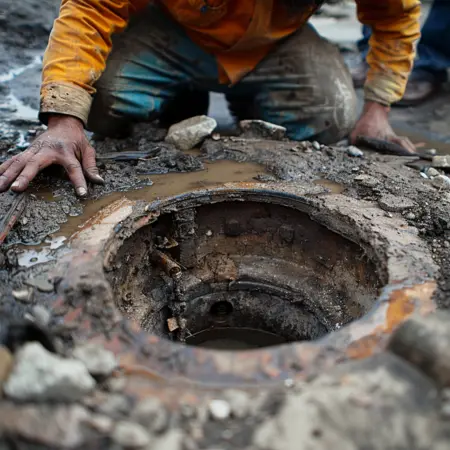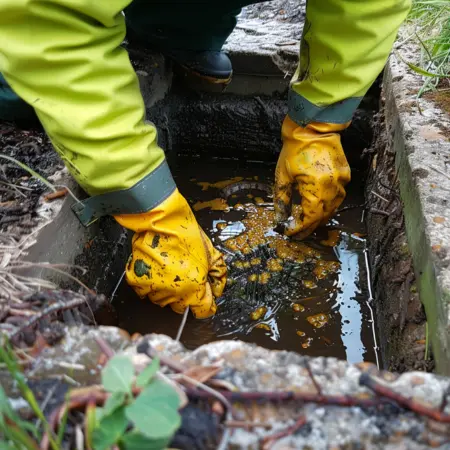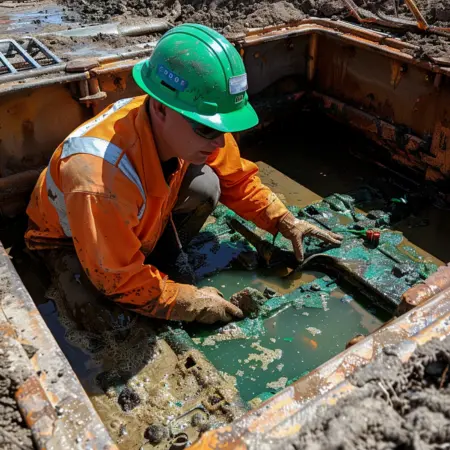Cleaning a septic tank is essential for keeping your system in good shape.
Knowing how to do it right can save you time and trouble, whether you’re using pumping or going for other methods.
Here, discover quick and easy methods for keeping your tank in top condition.
Key Takeaways
- Watch for slow drains or bad smells; these could mean it’s time to pump your septic tank.
- Search online for local septic tank cleaners or ask friends for suggestions.
- Cleaning a septic tank can involve handling harmful materials.
- The cost of pumping depends on where you live and the size of your tank.
- Regular maintenance keeps your system running well and helps avoid problems.
- Tank cleaners break down waste and help your septic system function properly.
- Manual cleaning can help with small clogs or if you want to skip pumping.
Steps To Clean A Septic Tank With Pumping
Here’s a step-by-step guide to help you through the process of pumping.
Follow these simple steps to ensure your tank stays clean and your system runs smoothly.
Step 1 – Preparation
In the first step, which is preparation, follow these steps:
A. Assess The Tank’s Condition
Before you start, check the condition of your septic tank.

Look for signs like slow drains or unpleasant odors, which might mean it’s time to pump.
If unsure, a professional can help assess whether a pump-out is necessary.
B. Follow Safety Precautions
Cleaning a septic tank involves working with possibly harmful materials.
Wear protective gear like gloves and a mask.
Ensure the area around the tank is clear and safe for the workers.
Step 2 – Pumping Process
Be mindful of these points for the pumping process:
A. Find Professional Service
Look for local septic tank cleaning services online or ask friends for recommendations.
Make sure they’re licensed and have good reviews.
It’s a good idea to get a few quotes to compare prices.
B. What To Expect During Pumping
When the professionals arrive, they will use a large pipe to pump out the waste from your tank.
They may also test the tank for any issues.
The process usually takes a few hours, depending on the tank’s size and condition.
C. Costs Involved
The cost for pumping can vary based on your location and the size of your tank.
On average, it can range from $200 to $500.
The price might include inspection and minor repairs, so ask for detailed rates before work begins.
Step 3 – Post-Pumping Care
After the pumping process is completed, follow these steps:
A. Inspect The Tank And System
Check the tank for any damage or issues.
Ensure the lid is securely replaced and there are no leaks.
The service provider should give you a report on the tank’s condition and any necessary repairs.
B. Schedule Regular Maintenance
To keep your septic system in good shape, schedule regular pump-outs every 2-3 years.
Regular maintenance helps prevent problems and ensures your system runs smoothly.
Cleaning A Septic Tank Without Pumping
If you want to clean your septic tank without pumping, you can still keep it in good shape with a few easy steps:
1. Using Tank Cleaning Products
Let’s have a look at the types of cleaning products and how to use them safely:
A. Septic Tank Cleaners And Their Benefits
Tank cleaners help break down waste and keep your septic system working well.
Common types include enzyme cleaners and bacteria boosters.

These cleaners help to break down solids and improve the working of your septic system.
B. Using Them Safely And Effectively
Follow the instructions on the product label for the correct amount to use.
Cleaners are usually poured directly into the toilet or drain.
Use them in less quantity, as too much can disturb the natural balance of your septic system.
2. Manual Cleaning
Manual cleaning helps handle minor issues in your septic tank.
It keeps things running smoothly without the need for pumping.
A. When And How To Manually Clean
Manual cleaning might be needed if there are minor clogs or you want to avoid pumping.
If reachable, use a long-handled brush to scrub the inside of the tank.
This is done less often and doesn’t replace regular pumping.
B. Tools And Materials Needed
For manual cleaning, you’ll need:
- A strong brush
- Gloves
- Flashlight.
Wear protective gear and use the right cleaning solutions if needed.
C. Safety Tips For Manual Cleaning
Always wear gloves and protective clothing to avoid contact with harmful waste.
Ensure good airing if you’re working in a narrow space.
Never attempt manual cleaning if unsure or uncomfortable with the process.
It’s better to call a professional.
3. Regular Maintenance Practices
Regular maintenance reduces the need for frequent cleanings.
Don’t flush things like wipes or grease to clean your septic tank less often.
Reduce the water you use, as excessive water can overload the system.
Regularly check for leaks and maintain a proper waste disposal routine.
Use cleaners as directed and keep an eye on your system’s performance.
Scheduling regular inspections can help you catch issues early and keep your tank in good shape.
DIY Vs. Professional Help
DIY methods are great for simple jobs, like using special cleaners to help your septic tank.
If the problem is small and you’re okay with basic fixes, you can try doing it yourself.
Hiring professionals is helpful for bigger jobs.
They have the tools and know-how to handle tough things like emptying the tank.

Also, they can spot problems you might not notice and give you good advice.
Look for companies with good reviews and proper licenses to find a good septic service.
Ensure they clearly explain what they will do and how much it will cost.
If you’re looking for excellent cleaning services, contact us at Septic System Services.
Conclusion
This article talks about cleaning a septic tank with and without pumping.
It also discusses DIY vs. professional cleaning. If you want to hire professionals to clean your septic tank, contact us at OP Plumbing Hub.
